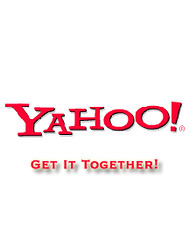Every year, Reputation Institute looks at how the general public rates 1,000 companies in over 20 industry categories in more than 25 countries, making Global Reputation Pulse the largest study of reputation in the world. Most of the work focuses on how companies perform in their home countries, but an article in Forbes today highlights 28 companies with international merit.
 The Top Ten Brands By Reputation.
The Top Ten Brands By Reputation.
1. Google (United States)
2. Sony (Japan)
3. The Walt Disney Company (United States)
4. BMW (Germany)
5. Daimler (Germany)
6. Apple (United States)
7. Nokia (Finland)
8. IKEA (Sweden)
9. Volkswagen (Germany)
10. Intel (United States)
Microsoft just missed the top ten. And there are many great companies that round out the full list of the 28 most reputable companies. The study was based on several factors, including products and services, innovation, workplace, governance, citizenship, financial performance, and leadership.
Understanding What Reputation Really Means.
One of the most common mistakes in business is to use two terms — brand and reputation — interchangeably. (The same can be said for brand and identity.) The confusion has become more pronounced in recent years, in part, because some social media experts frequently combine identity, brand, and reputation. So let's dispel some of the mystery.
There isn't much reason to reinvent an answer in this case. Richard Ettenson and Jonathan Knowles clarified brand and reputation well enough in 2008.
They defined brand as a “customer-centric” concept that focuses on what a product, service, or company has promised to for its customers and what that commitment means to them. In short, it's the total net sum of all positive and negative impressions about a company based largely upon the consumer-company relationship.
Reputation, on the other hand, is a “company-centric” concept that focuses on the credibility and respect that an organization has among a broad set of constituencies. This would include everyone: employees, investors, regulators, journalists, local communities, and customers. And, it would include all those factors cited by the Reputation Institute.
If you need an example to help drive the difference home, Walmart is one of the best companies to consider. It frequently scores high as one of the best known brands, but its reputation often serves as its primary detractor. It will always be that way for Walmart until the company holds itself to a higher standard.
What It Takes To Establish A Strong Reputation.
1. Product/Service. The ability to deliver on a brand promise — products and services — is paramount to establishing legitimacy. It's one of the primary reasons Google sucked some of the air out of Yahoo as search stewards. As Yahoo bought companies and rebranded them to the central brand, it also inherited and transposed product and service issues. Sometimes it worked out okay with platforms like Flickr, but it suffered the opposite fate with platforms like MyBlogLog. Google, on the other hand, saw its reputation soar as it transformed its acquisitions into Google culture.
2. Brand & Identity. While reputation, brand, and identity are different, they work in tandem. While the products and services may have differentiation, the ability to communicate that differentiation makes all the difference. Apple is paticularly good at this by demonstrating its minimal design elements and innovation virtually with everything it does, right down to the people we expect to see behind the counters of any Apple retail outlet.
3. Advertising. While anyone can argue the finer points of whether social media has circumvented the traditional principles of advertising, it's still the primary source of message delivery. Advertising, more than any other discipline, communicates the brand promise, establishes the identity, and attracts enough attention to create sales opportunities. Sure, sometimes advertising drives sales, but mostly it focuses on everything else.
4. Public Relations. While some people might take exception to seeing public relations follow advertising, there is some truth to the idea. Public relations (and this includes but is not limited to the art of media relations) works to have other groups — ideally employees (via internal communication), investors, regulators, journalists, local communities, and customers — to adopt and believe in the brand promise. To do it, public relations professionals need to assist in creating an environment of mutual trust.
5. Corporate Citizenship. Great companies do not operate within a void. They generally consider corporate philanthropy part of their culture. Even small localized companies can learn from larger companies in that if the community isn't economically viable, healthy, vibrant, and provides a better quality of life, then it will wither. And with it, so will sales within that community.
When you add it all up and look to some of the best run companies in the world, you might sometimes come away with the feeling that those scoring highest on the reputation charts seems to have it all or, at least, very close to it. In some ways they do. But what's even more important to consider it that any company (or individual) can have it all too. It's a choice.
 The Top Ten Brands By Reputation.
The Top Ten Brands By Reputation.1. Google (United States)
2. Sony (Japan)
3. The Walt Disney Company (United States)
4. BMW (Germany)
5. Daimler (Germany)
6. Apple (United States)
7. Nokia (Finland)
8. IKEA (Sweden)
9. Volkswagen (Germany)
10. Intel (United States)
Microsoft just missed the top ten. And there are many great companies that round out the full list of the 28 most reputable companies. The study was based on several factors, including products and services, innovation, workplace, governance, citizenship, financial performance, and leadership.
Understanding What Reputation Really Means.
One of the most common mistakes in business is to use two terms — brand and reputation — interchangeably. (The same can be said for brand and identity.) The confusion has become more pronounced in recent years, in part, because some social media experts frequently combine identity, brand, and reputation. So let's dispel some of the mystery.
There isn't much reason to reinvent an answer in this case. Richard Ettenson and Jonathan Knowles clarified brand and reputation well enough in 2008.
They defined brand as a “customer-centric” concept that focuses on what a product, service, or company has promised to for its customers and what that commitment means to them. In short, it's the total net sum of all positive and negative impressions about a company based largely upon the consumer-company relationship.
Reputation, on the other hand, is a “company-centric” concept that focuses on the credibility and respect that an organization has among a broad set of constituencies. This would include everyone: employees, investors, regulators, journalists, local communities, and customers. And, it would include all those factors cited by the Reputation Institute.
If you need an example to help drive the difference home, Walmart is one of the best companies to consider. It frequently scores high as one of the best known brands, but its reputation often serves as its primary detractor. It will always be that way for Walmart until the company holds itself to a higher standard.
What It Takes To Establish A Strong Reputation.
1. Product/Service. The ability to deliver on a brand promise — products and services — is paramount to establishing legitimacy. It's one of the primary reasons Google sucked some of the air out of Yahoo as search stewards. As Yahoo bought companies and rebranded them to the central brand, it also inherited and transposed product and service issues. Sometimes it worked out okay with platforms like Flickr, but it suffered the opposite fate with platforms like MyBlogLog. Google, on the other hand, saw its reputation soar as it transformed its acquisitions into Google culture.
2. Brand & Identity. While reputation, brand, and identity are different, they work in tandem. While the products and services may have differentiation, the ability to communicate that differentiation makes all the difference. Apple is paticularly good at this by demonstrating its minimal design elements and innovation virtually with everything it does, right down to the people we expect to see behind the counters of any Apple retail outlet.
3. Advertising. While anyone can argue the finer points of whether social media has circumvented the traditional principles of advertising, it's still the primary source of message delivery. Advertising, more than any other discipline, communicates the brand promise, establishes the identity, and attracts enough attention to create sales opportunities. Sure, sometimes advertising drives sales, but mostly it focuses on everything else.
4. Public Relations. While some people might take exception to seeing public relations follow advertising, there is some truth to the idea. Public relations (and this includes but is not limited to the art of media relations) works to have other groups — ideally employees (via internal communication), investors, regulators, journalists, local communities, and customers — to adopt and believe in the brand promise. To do it, public relations professionals need to assist in creating an environment of mutual trust.
5. Corporate Citizenship. Great companies do not operate within a void. They generally consider corporate philanthropy part of their culture. Even small localized companies can learn from larger companies in that if the community isn't economically viable, healthy, vibrant, and provides a better quality of life, then it will wither. And with it, so will sales within that community.
When you add it all up and look to some of the best run companies in the world, you might sometimes come away with the feeling that those scoring highest on the reputation charts seems to have it all or, at least, very close to it. In some ways they do. But what's even more important to consider it that any company (or individual) can have it all too. It's a choice.



















